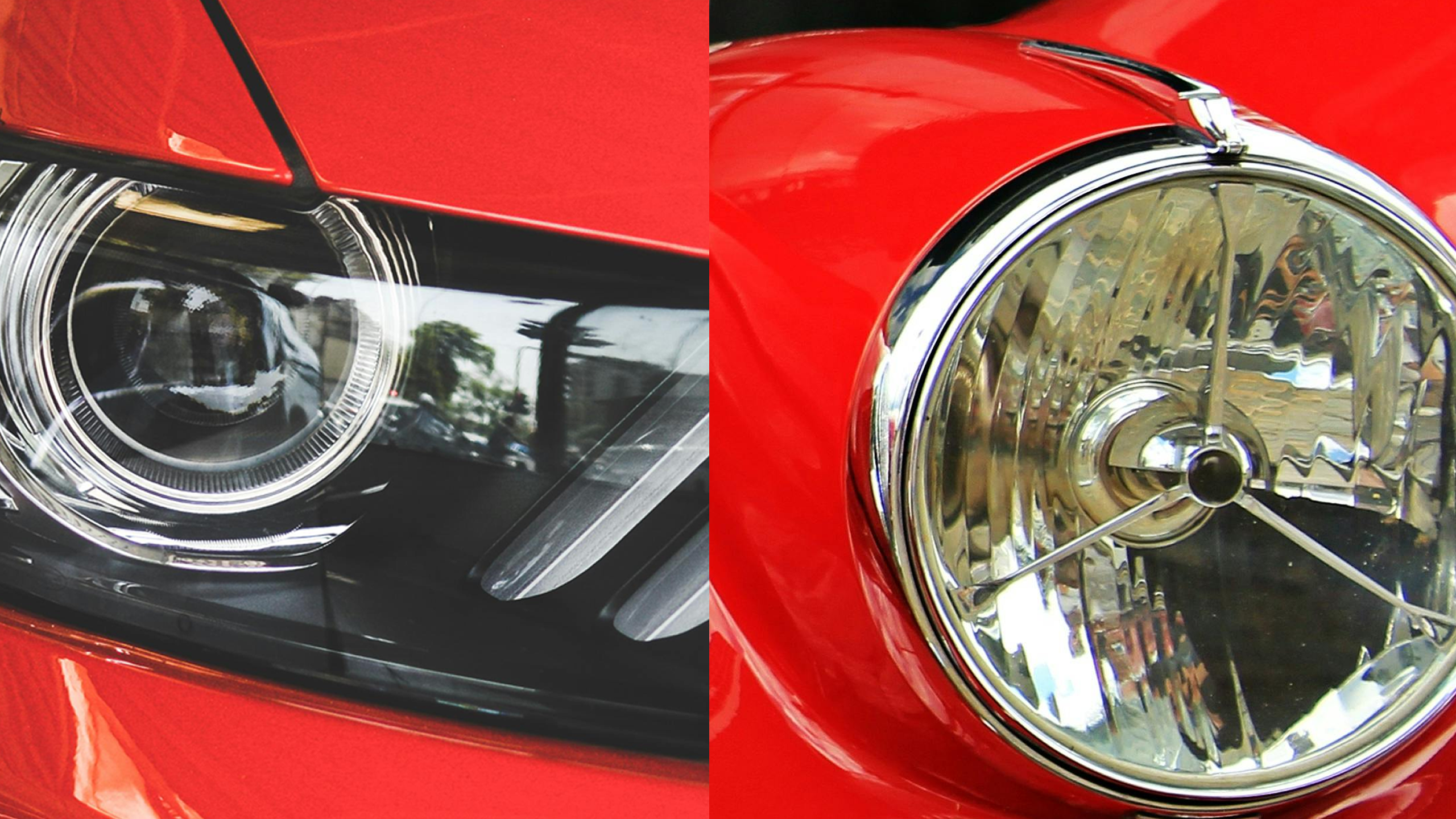Basic globes and the high beam switch located on the floor. Yes, once upon a time, you used a foot switch on the cars floor to activate and deactivate your high beam headlights. This was once the realm of a standard headlight on cars made and imported into Australia, but these days things are very different.
A Little History.
Back in around 1880, the first forms of headlights or lamps as they were called came into being as a flame with some form of fuel. Mirrors were placed behind to focus the burning light. From early beginnings, the evolution through the 1900’s, took us to an electric form, which did take some time to become a standard. In the 1940’s, a sealed beam headlight was developed and adopted widely. The main benefit was they were protected from wind and rain, but if damage occurred, they would need a full replacement. In the 1960’s, replaceable bulbs came into being and halogen lamps were introduced as a further development. These offered a brighter and better form of lighting the way ahead.
Jumping Forward.
The 1990’s saw the HID (High Intensity Discharge) come into being and being adopted widely. The bulbs lasted longer, the light was more energy efficient and was just better all around. Other evolutionary developments were also taking place as the humble headlight evolved. Integration of parking lights, headlights and efficient high beam took us further into a safer way to drive at night with better efficiency.
The 2000’s.
While you probably don’t consider the evolution of your vehicle’s headlights too much, the development continued with the adoption of LED’s. This technology did take some time to perfect, but ultimately swept the industry and brought lighting to greater heights with more efficiency and better implementation.
However, as the technology in these headlights has become brighter and smarter, the light that they produce can be an issue for other drivers. How often have you been dazzled by the lights of an oncoming vehicle when it goes over a bump? The effect can be considerable, especially for older drivers whose eyesight reacts more so than younger drivers. There is no doubt efficiency has improved with better and brighter light sources, self-levelling lights, automatic lights driven by sensors, daytime running lights and so on, but being sensitive to other drivers with your lights, especially high beam, should always be a consideration.
Changing it Up.
But what if you have an older vehicle and you feel the headlights, and the light they produce, are letting you down as you drive at night. Brighter bulb replacements are certainly a consideration along with having the plastic covers cleaned, detailed and even renewed to allow a better lighting environment. Once upon a time, headlights used glass, these days a headlight’s outer cover is plastic with a UV resistant treatment. Over time, this will break down making them look opaque, as opposed to being crystal clear like newer vehicles. This will impact the efficiency of your lighting, but treatments to revitalise them are available. Another consideration is to have the alignment of your headlights checked, even on newer vehicles. So often on the road these days, many headlights look like they are out of alignment.
Some Considerations.
If you have any issues or concerns with your car’s lighting and its efficiency, Autospark can certainly be of help. We can supply and fit newer and more efficient bulbs, check that they are in alignment (which is often overlooked on many cars) and offer advice on refurbishment. Our years of experience, product knowledge and skilled technical staff can assist you, not only for lighting, but all things auto electrical and beyond.
Just reach out to your nearest Autospark branch for helpful advice.





